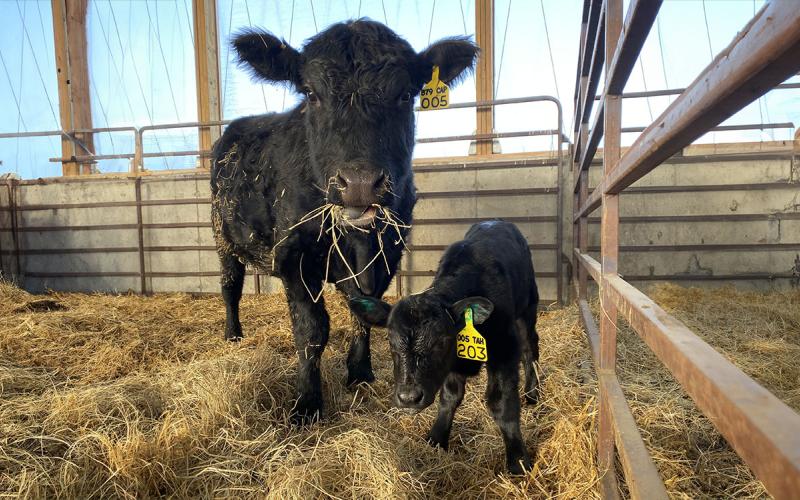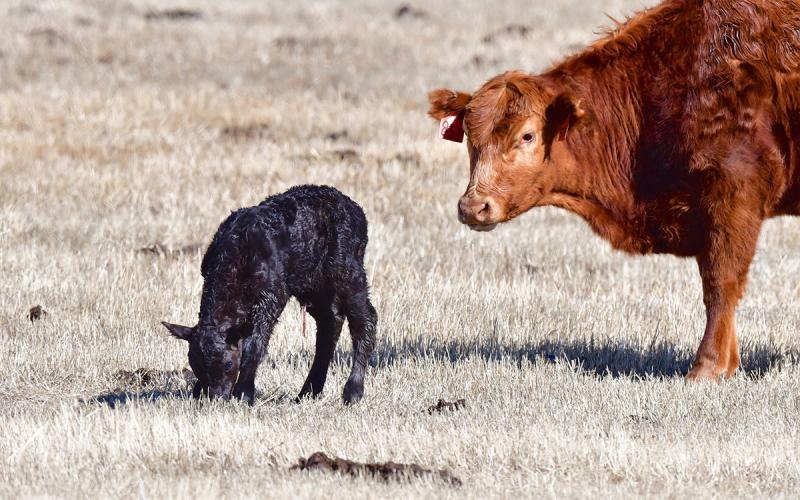
Written by Taylor Grussing, former SDSU Extension Cow/Calf Field Specialist. Reviewed and updated by Olivia Amundson, former SDSU Extension Cow/Calf Field Specialist.
With 92% of beef operations in the United States utilizing solely natural service breeding in the cowherd, the use of reproductive technology is highly unutilized, as many associate these programs with artificial insemination (AI). However, natural-service synchronization protocols can be utilized without AI if slightly different steps are implemented. Natural-service synchronization protocols differ in that less injections are utilized, because we do not want estrus grouped so tight that bulls cannot cover all the cows. The Using Estrous Synchronization in Natural-Service Breeding Situations factsheet describes the benefits of estrous synchronization, how it works with the estrous cycle, which protocols to use and bull considerations for natural-service synchronization.
Three protocols which are cost-effective and minimally labor-intensive include:
- One-Shot Prostaglandin Protocol (PGF)
Turn in bulls (day one of breeding season) and inject all heifers and cows with prostaglandin F2α (PGF) on day five.
- Seven-Day Controlled Internal Drug Release (CIDR) Protocol
Insert CIDR for seven days. On day seven, during CIDR removal, turn out with bulls.
- Melengestrol Acetate (MGA) Protocol (Heifers ONLY)
Feed MGA (0.5 mg/hd/day) for 14 days to heifers and turn bulls in 10 days after MGA withdrawal.
Advantages of the preceding MGA protocol includes no trips through the chute and a portion of prepuberal heifers will be induced to cycle earlier; however, MGA needs to be fed daily for 14 days, and each heifer needs to receive the correct dose. The advantage of the seven-day CIDR is similar to MGA in that a portion of prepuberal heifers or noncycling cows will be induced to cycle earlier; however, this protocol requires two trips through the chute. The advantage of the PGF protocol is it is a single trip through the chute (PGF injection); however, all heifers and cows need to be cycling in order to respond to PGF. Prepuberal heifers and/or noncycling cows will not respond to PGF, since they do not have a corpus luteum.
Why Synchronize the Cowherd?
Similar to synchronization with AI, the benefits associated with natural-service synchronization are similar: A concise calving distribution with the potential for heifers to be serviced twice in about 30 days versus twice in 40 days. Pregnancy rates should be relatively comparable to those of synchronized AI systems. Expected pregnancy rates for natural service are normally 60–70% during 21 days of breeding assuming the bulls are fertile and that 100% of the heifers and cows are cycling.
By frontloading the breeding season and subsequent calving season, there will be better use of labor and resources. Inevitably, there will still be some late bred or open cows that will sort themselves off from the herd. However, the economic ramifications realized from synchronizing the breeding season include labor savings during a shorter calving season, more pounds of calf weaned per cow exposed and potential for receiving an increased price per head on sale day due to increased lot uniformity. These are benefits producers should think about twice before passing up potential dollars this year.
Bull Management
Bull management becomes very important when implementing a natural-service synchronization protocol. Factors to consider when selecting bulls for a natural-service synch program include experience of bulls (virgin vs. mature), pasture size and terrain. Mature bulls are better-suited for natural-service synchronization protocols, because they already have some experience and can service more cows (1:20 and 1:25 bull to cow ratio). All bulls should pass an annual breeding soundness exam, health and body condition evaluation before turn out. For more information on bull power, see the article, How Many Bulls Do You Need When Synchronizing With Natural Service?.
Conclusion
Before a natural-service synchronization protocol is implemented, first determine if ample resources (facilities, labor, and number of bulls) are available. Compliance is vital to the success of these systems. Therefore, evaluate which protocol will work best with the resources that are available and consult herd advisors for assistance if other options need to be considered.
For more information on estrous synchronization, contact:


